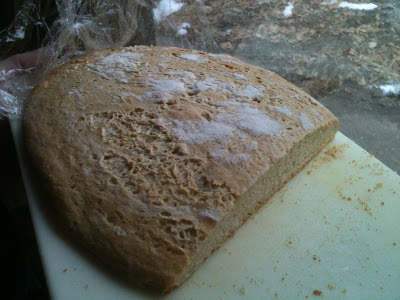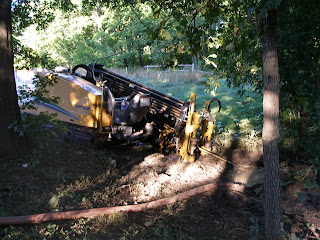You Cannot Define a Forest
As soon as we define " it", we limit "it" to our definition. Nature defines an ecological niche, whether contrived or natural. The niche is defined by its occupants, patterns, cycles, and relationships. the flora and fauna occupying a niche creates the cycle of ecological services. The patterns by which the members appear are directly related to the relationships of nutrient cycling above and below ground, resource partitioning above and below ground, and the periodic disturbances which occurred.
In ecological design we must anticipate succession and understand that our design is not a definition, but a mere starting point from which all succession will proceed. Understanding that change is inevitable, we can prepare our functional spaces for that change and facilitate or even accelerate the succession to our best event is as the primary livestock.
As rotational grazing with animals creates a better quality food base, better soil, and increased ecological services, we can buy our very presence in harvesting and managing our food production areas increase the same benefits. Just as livestock are rotated through their food production spaces, so must we rotate through our production spaces to ensure a stable ecology. Although if livestock it may be over days and weeks rotating fields, with human food production it is most likely over months and seasons.
When we create a garden space, that space itself must go through successive changes in order to keep soil health at a premium and pests to a minimum. Our garden spaces should either be producing food for ourselves or food for the soil organisms and beneficial insects. Therefore as we define the garden as a place to grow food, we must not forget that we have taken it out of the natural ecology for our own purpose, but can balance that loss with spaces of beneficial habitat for both soil and insects.The best part of this is, as we rotate our production spaces, the new soil is revitalized and pests and disease are reduced.
The garden space is for most people a permanent structure with defined access points and planting patterns. These access points and patterns change seasonally and annually. In forest gardening initial pattern and patch dynamics in the design must have diversity built in over the spaces rather than in gardening over time. In forest gardening we do not have the opportunity, nor does it make sense, to move plants around on an annual basis to promote soil health and resource partitioning. nature world invariably move plant species around as the canopy changes in the soil niches modify. Over many years and decades the light and humidity will change in the growing spaces, and nature will redefine the forest garden. As we work with nature we can help with that definition by placing plants that will over time fill the niche and create their own soil fertility and niches for long-lasting and slow successional change.
In ecological design we must anticipate succession and understand that our design is not a definition, but a mere starting point from which all succession will proceed. Understanding that change is inevitable, we can prepare our functional spaces for that change and facilitate or even accelerate the succession to our best event is as the primary livestock.
As rotational grazing with animals creates a better quality food base, better soil, and increased ecological services, we can buy our very presence in harvesting and managing our food production areas increase the same benefits. Just as livestock are rotated through their food production spaces, so must we rotate through our production spaces to ensure a stable ecology. Although if livestock it may be over days and weeks rotating fields, with human food production it is most likely over months and seasons.
When we create a garden space, that space itself must go through successive changes in order to keep soil health at a premium and pests to a minimum. Our garden spaces should either be producing food for ourselves or food for the soil organisms and beneficial insects. Therefore as we define the garden as a place to grow food, we must not forget that we have taken it out of the natural ecology for our own purpose, but can balance that loss with spaces of beneficial habitat for both soil and insects.The best part of this is, as we rotate our production spaces, the new soil is revitalized and pests and disease are reduced.
The garden space is for most people a permanent structure with defined access points and planting patterns. These access points and patterns change seasonally and annually. In forest gardening initial pattern and patch dynamics in the design must have diversity built in over the spaces rather than in gardening over time. In forest gardening we do not have the opportunity, nor does it make sense, to move plants around on an annual basis to promote soil health and resource partitioning. nature world invariably move plant species around as the canopy changes in the soil niches modify. Over many years and decades the light and humidity will change in the growing spaces, and nature will redefine the forest garden. As we work with nature we can help with that definition by placing plants that will over time fill the niche and create their own soil fertility and niches for long-lasting and slow successional change.


Comments